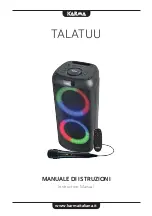
36
7.04 Travel Speed
Speed at which a weld travels influences the width of the weld and penetration of the welding run.
7.05 Electrode Wire Size Selection
The choice of electrode wire size in conjunction with shielding gas used depends on:
The position of welding
Thickness of the metal to be welded
The deposition rate required
Capacity of the wire feed unit and power source
The bead profile desired
The amount of penetration required
Type of joint
Cost of the electrode wire
Weld metal deposition rate is proportional to current density. Current density is defined as the current
per cross sectional area of the electrode wire and is normally expressed as amps per mm
2
. An example
is tabled below.
Electrode Wire Size
Current (Amps)
Current Density
(Amps/mm
2
)
Deposition Rate
(lb/hour)
0.035” (0.9mm)
200
380
6.3
0.034” (1.2mm)
200
177
6.0
7.06 Deposition Rate Comparison
This demonstrates that where the upper limit of current is limited by machine capacity and duty cycle, higher
deposition rates and therefore greater
productivity will be achieved by using smaller
electrode wire. The ARC MASTER 300 MST is a
particularly efficient MIG welder with the 0.9mm
steel wire in spray transfer mode. The savings
from decreased welding time will more than
cover the small cost penalty of the smaller
electrode wire sizes. 0.035” wire cost
approximately 10% more than 0.045”, but is
deposited approximately 15% faster. Higher
current density (or smaller diameter wire) also
gives deeper penetration as shown.
Wire Penetration Comparison
















































